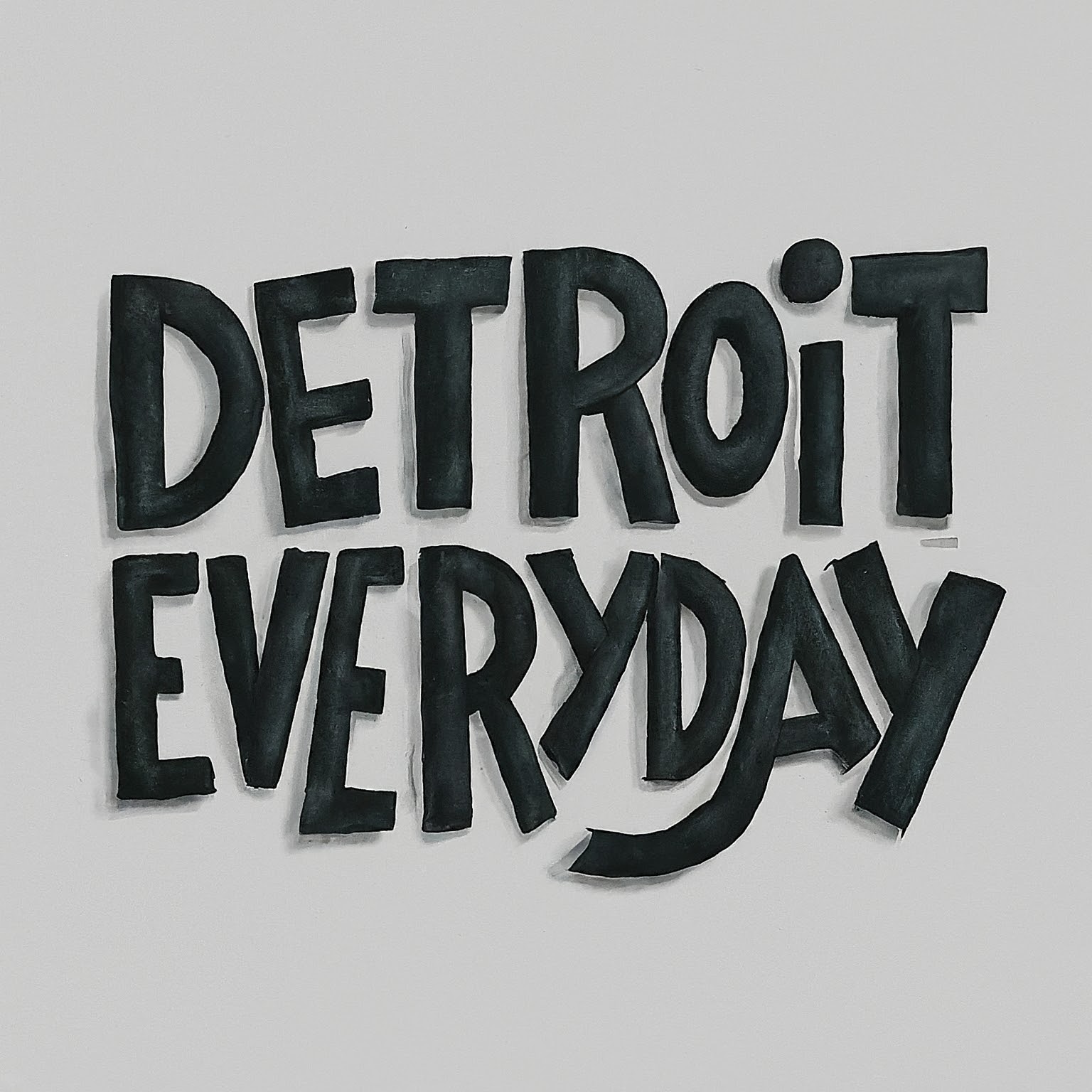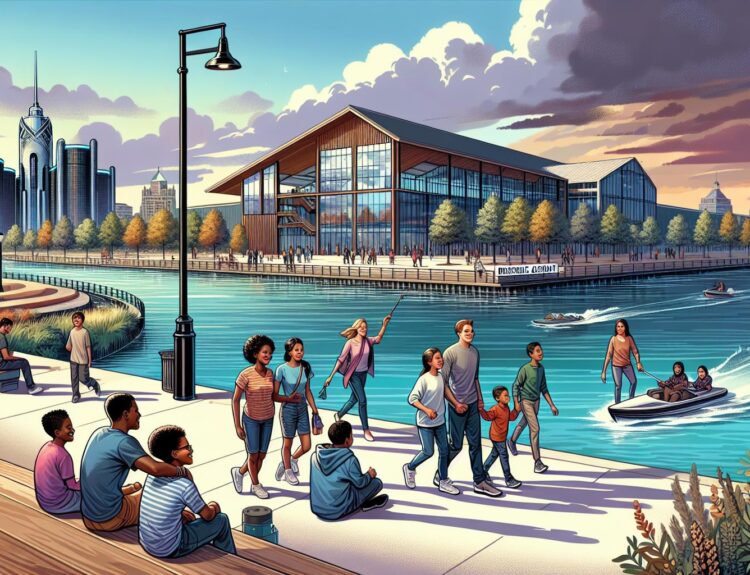Detroit’s a city with a soul, a melting pot of cultures, histories, and stories waiting to be discovered. I’ve always been fascinated by its rich tapestry of communities, each adding its unique flavor to the city’s vibe. From the vibrant murals of Eastern Market to the historic streets of Corktown, there’s a story lurking around every corner, and I’m here to share some of my favorite spots to dive into the heart of Detroit’s diversity.
Exploring these places isn’t just about sightseeing; it’s a journey through the lives and experiences of the people who make Detroit what it is today. Whether you’re a history buff, a foodie, or just someone curious about the world, you’ll find something in Detroit that speaks to you. So, buckle up, and let’s take a ride through the Motor City’s most colorful neighborhoods.
Vibrant Murals of Eastern Market
When I first set foot in Eastern Market, it wasn’t just the bustling marketplace that caught my eye, but the vivid murals painted on the buildings surrounding the market that truly captivated me. These large-scale artworks are more than just decorations; they’re a canvas that tells the story of Detroit’s diverse communities and their histories.
The art at Eastern Market is part of the Murals in the Market festival, an annual event where local and international artists come together to transform the district into a sprawling outdoor gallery. Each mural has its unique voice, showcasing everything from Detroit’s rich automotive history to reflections on social justice.
One of the reasons I find the murals so engaging is how they incorporate elements of Detroit’s diverse cultural tapestry. You’ll find pieces celebrating the city’s African American roots, its strong Middle Eastern community, and the vibrant colors of Latin American traditions. This blend of influences is a testament to the city’s resilience and its embrace of multiculturalism.
For those interested in exploring these murals, I recommend setting aside a few hours to wander through Eastern Market. The experience is different for everyone, with some murals sparking introspection and others, sheer awe. Here are a few tips for your mural exploration:
- Visit During Market Days: While the market is open, the district buzzes with energy, making it the perfect backdrop to appreciate the art.
- Take a Guided Tour: Several organizations offer tours that delve into the stories behind the murals, providing context and insight that you might miss on a solo adventure.
- Bring a Camera: You’ll want to capture the intricate details of these masterpieces. Plus, they make for striking backdrops for portraits!
As I moved from mural to mural, I couldn’t help but feel a deeper connection to the city. Each piece serves as a reminder of Detroit’s ongoing story — a narrative of struggle, beauty, and hope. Through the vibrant murals of Eastern Market, I’ve learned that art has the power to unify communities, sparking conversations and fostering a sense of belonging.
Whether you’re a longtime resident or just passing through, the murals offer a unique lens through which to view the heart of Detroit. And as the city continues to evolve, so too will the walls of Eastern Market, painting new chapters in the city’s ever-unfolding story.
Historic Streets of Corktown
When I first set foot in Corktown, Detroit’s oldest neighborhood, I couldn’t help but be enchanted by its historic charm and the stories etched into the very fabric of its streets. This area is a living museum, showcasing the city’s Irish roots that date back to the 1830s, and offers a compelling journey through Detroit’s multifaceted history.
Walking down Michigan Avenue, the main artery of Corktown, I’m always struck by the vibrant blend of old and new. Here, classic Victorian homes sit shoulder to shoulder with contemporary businesses, each telling their own tale of survival and revival. It’s a place where every brick and beam seems to whisper stories of the past, inviting those who pass by to listen and learn.
The heart of Corktown, however, isn’t just in its architecture but in its community spirit. The area’s pubs, cafes, and restaurants, many of which are owned by local entrepreneurs, serve as gathering spots where tales of old are shared and new memories are made. These establishments don’t just offer a taste of Detroit’s culinary diversity; they embody the resilience and warmth of the Corktown community.
For anyone interested in diving deeper into Corktown’s history, I’d recommend a visit to the Workers Row House. This historic site offers a glimpse into the lives of the working-class immigrants who once called Corktown home, providing a poignant reminder of the city’s roots in labor and immigration.
Another must-visit is the old Michigan Central Station, once a bustling hub of activity and now an emblem of Detroit’s phoenix-like resurgence. Plans to restore this iconic landmark are underway, signaling a new chapter not just for Corktown but for the entire city.
Strolling through Corktown, with its rich tapestry of history and culture, serves as a vivid reminder of Detroit’s dynamic spirit. It’s a neighborhood that embraces its past while boldly looking to the future, making it an essential stop for anyone seeking to understand the diverse communities that make up this great city.
Cultural Institutions in Mexicantown
As I ventured deeper into Detroit’s rich tapestry of communities, I found myself drawn to Mexicantown, a vibrant neighborhood bursting with culture and history. This part of the city, much like Corktown, has its own story to tell, woven through the streets, murals, and most notably, its cultural institutions.
One cannot talk about Mexicantown without mentioning The Mexicantown Cultural Center. This invaluable resource not only serves as a hub for community gatherings but also offers a plethora of programs that educate visitors about the rich Mexican heritage. From traditional dance classes to Mexican cooking workshops, the center is a bustling focal point for both residents and tourists eager to dive into the culture.
Another staple of Mexicantown that caught my attention was Casa de España. Although it focuses on Spanish culture, it beautifully intersects with Mexican traditions, highlighting the shared history and influence between Spain and Mexico. Casa de España is renowned for its art exhibitions, language courses, and cultural events that embody the vibrant spirit of both countries.
What’s fascinating about Mexicantown is not just its institutions but also the informal cultural exchange that happens every day. Walking down the streets, I was mesmerized by the colorful murals that decorate the neighborhood. Each one tells a story, celebrating iconic figures, historical events, or simply the daily life in Mexicantown. These public artworks stand as visual narratives of the community’s identity and pride.
For those eager to explore further, the local eateries offer an immersive cultural experience with authentic Mexican cuisine. I learned that food plays a pivotal role in Mexican culture, and in Mexicantown, it’s no different. Restaurants and bakeries, some decades old, serve as informal cultural institutions themselves, where recipes passed down through generations continue to delight and educate palates about Mexico’s diverse culinary landscape.
My exploration of Mexicantown was a testament to Detroit’s broader narrative of diversity and resilience. Here, cultural institutions and everyday interactions weave a complex, colorful fabric of community life, inviting visitors to not only observe but actively participate in its ongoing story.
Immersive Experiences in Greektown
Walking through the streets of Detroit’s Greektown, I’m always struck by the palpable sense of history and the vibrant culture that colors every corner. It’s as if each cobblestone and neon sign whispers stories of old-world charm blended with modern resilience.
Nestled on Monroe Street, Greektown isn’t just a destination; it’s an experience. The area thrives with a mix of traditional Greek restaurants, bakeries, and cafes, each offering a slice of Mediterranean life. I’ve spent countless afternoons savoring mouthwatering baklava and strong, aromatic Greek coffee in cafes that feel like they’ve been lifted straight out of Athens.
One Must-Visit spot is the Greektown Casino, which, beyond its gaming floors, serves as a cultural hub during various Greek holidays. Here, I’ve witnessed live bouzouki music, traditional dances, and the kind of spirited celebrations that really make you feel part of the community. It’s these authentic cultural showcases that offer a deeper understanding and appreciation of Detroit’s Greek heritage.
Another highlight is the annual Detroit Greek Independence Day Parade. This vibrant event paints the streets with the blue and white of the Greek flag, featuring traditional costumes, music, and dance. Participating in the festivities, or even just watching from the sidelines, I’ve always found this to be a profound way to connect with the historical roots and enduring pride of Detroit’s Greek community.
For those interested in the religious and communal aspects of Greektown, the Annunciation Greek Orthodox Cathedral stands as a beacon of faith and tradition. The cathedral, with its breathtaking Byzantine architecture, not only offers religious services but also hosts cultural events that are open to the public. Attending one of these events has given me a beautiful insight into the spiritual practices that are a cornerstone of Greek culture.
Equally important to the immersive experience in Greektown are the less tangible aspects—the warmth of the people, the stories shared over a meal, and the feeling of belonging to something greater. It’s in these moments, whether I’m enjoying a lively conversation with a local shop owner or participating in a community event, that I truly grasp the essence of Greektown. This neighborhood embodies the soul of Greek culture, yet seamlessly integrates into the diverse tapestry that is Detroit.
Hidden Gems in Hamtramck
Exploring Detroit’s diverse communities led me to the colorful streets of Hamtramck, a small city nestled within Detroit’s limits. Unlike anywhere else in Detroit, Hamtramck boasts a rich tapestry of cultures, primarily influenced by its substantial Polish, Bangladeshi, Yemeni, and Ukrainian populations. My journey here was like stepping into a microcosm of global culture, where every corner and every street had its own story to tell.
Walking down Joseph Campau Avenue, I stumbled upon Polonia Restaurant, a testament to the area’s strong Polish heritage. This eatery isn’t just a place for delectable pierogi and hearty stews; it’s a hub for Polish culture, holding onto traditions that have been passed down through generations. The walls, adorned with artifacts and photographs, narrate the stories of Polish immigrants who shaped Hamtramck into what it is today.
Not far from Polonia, the Al-Islah Islamic Center showcases the vibrant Bangladeshi community in Hamtramck. The mosque, with its stunning architecture, isn’t just a place of worship but a community center where festivals and educational events bring people together, highlighting the Islamic culture’s richness and diversity.
In my wanderings, another hidden gem caught my eye: Yemen Cafe. This family-owned spot serves up some of the most authentic Yemeni dishes I’ve ever tasted. From the rich, spiced coffee to the savory lamb dishes, each bite was a journey to Yemen itself. The cafe doubles as a cultural center where the owners happily share tales of their homeland and the significance of their cuisine.
Among these cultural landmarks, Hamtramck’s art scene stands out, particularly through the Hamtramck Disneyland. This folk art installation, nestled in a residential backyard, is a kaleidoscope of colors and objects that reflect the eccentricity and diversity of the city’s population. It’s a visual representation of Hamtramck’s spirit, showcasing how art can truly bring communities together.
While diving deep into Hamtramck’s cultural mosaic, I attended the Hamtramck Music Festival, an annual event celebrating the city’s eclectic music scene. Local venues, from coffee shops to bars, were alive with sounds ranging from traditional Ukrainian ballads to Bangladeshi pop songs. It was a vivid display of the city’s multicultural harmony and its people’s creative spirit.
Conclusion
Exploring Detroit’s diverse communities has been an enlightening journey. From savoring authentic dishes at local eateries to immersing myself in the vibrant art and music scenes, I’ve discovered the rich tapestry that makes Detroit unique. Each visit to places like Hamtramck has not only broadened my understanding of the world but also deepened my appreciation for the cultures that thrive within this city. I’m left with a profound sense of connection and a curiosity to explore even more. Detroit’s multicultural harmony is a testament to the beauty of diversity and the strength it brings to communities.






